Calais
Citadelle & Forts:

English and French town defences
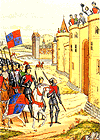 Edward III's army arrives at the gates of Calais with a besieging army - 1346. 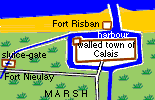 After capturing Calais, the English used natural features to turn it into an "impregnable stronghold": 1347 - 1558 |
Medieval walled town |
|
After a year of siege, the inhabitants trapped inside Calais were starving. Normally people in a besieged town who fought back would expect to be killed if the attackers succeeded. Six leading citizens offered their own lives if Edward III spared the rest of the townsfolk. His queen took pity on them, and asked if the brave burghers could also be spared if the town surrendered. Edward III agreed. The citizens of Calais lost their homes and property, but were permitted to leave without further bloodshed. Back to top |
|
|
English stronghold (1347-1558) Border castles held the edges of the
English occupied area (the "Pale") at Sangatte, Coquelles,
Frethun, Hames, Guînes, Balinghem and Marck. |
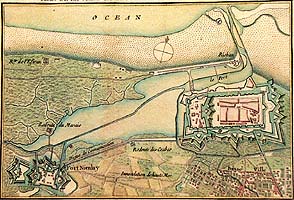 |
|
|
|
|
Flooding the marshes English and Flemish engineers built a fort - Fort Nieulay- to control this key point, with sluice-gates that could be opened to the sea. At high tide, seawater would flood all the low-lying land round Calais. In the event of an attack, this would make it very difficult for an enemy to bring siege weapons near the town walls. Back to top French re-capture 1558 |
|
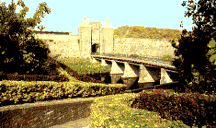 Above: French engineers demolished the medieval castle, and built a Citadelle at the western end of the town. Right: Errard cut a moat across the western end of the walled town, and created a citadelle strongpoint. The town walls and two outer forts were modernised, with heavy angular earthworks. |
Frontier fort |
|
|
|
|
Vauban Today |
|
|
|
Vauban
- 17th century military engineer |
|
|
|
|
|
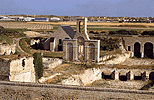
 16th century changes after
French re-capture in 1558
16th century changes after
French re-capture in 1558